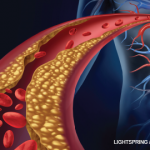Dr. Singh says clinicians need to be cautious with dosages in elderly populations. He suggests adjusting the dose according to kidney and liver function.
“What is appropriate for an adult is a high dose for elderly persons,” he explains. “That is a most important take-home point for geriatricians. For example, young people we start out with 15 mg methotrexate. But for people who are 75 and older, start them on 5 or 7.5 mg.”
Other Causes of Pain
Not all joint pain in older adults is due to osteoarthritis, says Elana J. Bernstein, MD, MSc, assistant professor of medicine at Columbia University College of Physicians and Surgeons. Two rheumatic diseases geriatricians should have on their radar: polymyalgia rheumatica (PMR) and giant cell arteritis (GCA).
“In particular, if a patient reports joint pain, it is important to ask about the location of the pain and whether it’s associated with any joint swelling or morning stiffness. For example, if the pain is primarily located in the shoulders and/or the hip girdle, that should raise suspicion for PMR or GCA,” says Dr. Bernstein, who is the program director of the Columbia University Medical Center/New York Presbyterian Scleroderma Program. “PMR and GCA are diagnoses that can be missed. … That is why it is important for geriatricians to have a close referral relationship with a rheumatologist they trust. If there are ever any questions, just pick up the phone.”
Dr. Bernstein notes rheumatoid arthritis and systemic lupus erythematosus can also initially present in older adults. Dr. Singh concurs, explaining that with elderly patients, typical lab results often don’t tell the whole story.
“Every elevated ESR is not due to rheumatoid arthritis,” he says. “ANA [anti-nuclear antibody] testing should not be done as a routine treatment. It should only be done in people who have symptoms that point toward lupus. ANA panels for joint pain are not appropriate.”
With regard to PMR diagnoses, Dr. Singh advises physicians to avoid high-dose steroids. He says preferred treatment should actually be low-dose corticosteroids for 12–18 months.
Collaboration
Communication between specialists is vital to the geriatric patient. Whether it is a note from the geriatrician alerting the rheumatologist of a referral or a rheumatologist changing medications, open lines of communication typically equate to improved patient care.
“If a geriatrician, or any other physician, wants to stop a medication that the rheumatologist has prescribed, please speak with the rheumatologist first,” Dr. Bernstein says. “For example, gout affects many elderly individuals, and a lot of these people are on urate-lowering therapy, such as allopurinol. Sometimes, the allopurinol is stopped without asking the rheumatologist—this seems to happen more often when patients are hospitalized—and when allopurinol is stopped, the patient can develop a gout flare.”


